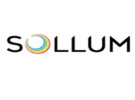In the evolving landscape of agricultural technology, dynamic lighting introduces a pivotal advancement for greenhouse tomato cultivation. Tailored to meet the specific needs of various tomato cultivars, this innovative solution enhances fruit quality and yield while concurrently reducing energy consumption. This business case unveils a pioneering approach that integrates technology with eco-friendly practices, redefining the standards of modern greenhouse tomato production.

Advanced dimming during the shoulder season
For greenhouse growers looking to use supplemental for a summer crop (planted in January and removed the following December), dynamic lighting can help accelerate the fruit harvests and maintain production throughout the season while limiting electrical energy consumption.
When applying light in the early spring, natural light fluctuates greatly and can quickly lead to over lighting or underlighting the crop if the grower is restricted to stepwise dimming functions. With dynamic lighting, growers can apply lighting during the shoulder months while setting their lighting system to be very reactive to natural light conditions to avoid spending money unnecessarily and causing photodamage to the crop.

Finetuning the lighting strategy to the cultivar
The greenhouse tomato industry is characterized by its varietal diversity. Widely grown tomato types include beefsteak, tomato on the vine (TOV), cherry, grape, Roma, and specialty. Within each tomato type are at least two dominant varieties, resulting in 21+ commercial varieties of tomatoes across all fruit types. This number is likely higher due to the wider variety in small tomato types (i.e., grape and cherry), exclusive varieties, and others being trialed. Each variety has a unique profile with respect to growth habits, time to harvest, and fruit size, color, and flavor. As Sollum® experienced in commercial pepper production, varieties have unique responses to supplemental lighting and benefit from having tailored, dynamic lighting strategies.

A 20-week study conducted at Wageningen University compared the response of two tomato varieties to different percentages of red photons in the overall light spectrum. This study showed that the crop response was indeed cultivar-specific, with an increasing percentage of red light resulting in a lower fruit fresh and dry mass for Merlice but no significant difference for Brioso. The authors, who used a dynamic lighting system for the study, note that greenhouse growers need to consider the potential trade-offs between fixture efficacy and crop yield. With dynamic lighting, growers can adjust the percentage of red light according to the variety’s needs at any point in time. This allows growers to make the most of each cultivar throughout the season and adapt to new cultivars from season to season.
By implementing fully dynamic LED top lighting such as Sollum’s solution, growers gain the convenience of working with a single lighting system to create infinite light zones with variety-specific photoperiod, intensity, and spectra that are dimmable in real-time. As a result, the grower can take full advantage of each variety’s genetic potential.
Elevating prevention and crop balance
Extended weather incidents and changing seasons can significantly lower the amount and intensity of light delivered to greenhouse crops, causing the plants to stretch in search of sunlight. This etiolation from low light levels produces weak stems that may struggle to support developing fruit. Etiolation is also characterized by small leaves, long internodes, and a pale yellow color.
From December 2022 to February 2023, parts of eastern Canada received the lowest natural light levels since 1940. For tomato growers, these lower light levels contributed to stem elongation that could easily throw the plant out of balance. With dynamic lighting, tomato growers were able to counter etiolation by applying high blue light levels to re-establish an optimal internode length and stem diameter.

The tunable spectrum of truly dynamic horticulture grow lighting is a powerful tool for countering etiolation when natural light levels are low.
More than just volume - bring back nutritious tomatoes
The unique genetic profile of tomato varieties strongly affects the chemical composition of the fruit and thus the nutritional quality. Tomatoes are an important source of antioxidants, which are biomolecules produced in response to environmental conditions, including light quality. For example, studies have demonstrated that the percentage of red and blue light at the start of flowering stimulates lycopene biosynthesis in tomato fruit. Lycopene is a carotenoid pigment responsible for tomatoes’ red color and antioxidant capacity. Lycopene has been described as one of the strongest natural antioxidants.
Yellow and orange varieties attribute the fruit color to a higher concentration of non-lycopene carotenoids, including beta-carotene and delta-carotene. Similarly, most brown/purple tomato varieties produce a chlorophyll derivative that blends with lycopene to produce a dark flesh. Another noteworthy antioxidant is anthocyanin, which is a class of water-soluble blue, red, or purple pigments found in tomato leaves and stems. Recent breeding efforts have focused on introducing anthocyanin-related genes into commercial varieties to promote its accumulation in the fruit skin, further elevating tomatoes’ nutritional quality. For example, Norfolk Plant Sciences announced in July 2023 that it would be introducing a range of purple tomato products that are engineered to produce high levels of anthocyanin. Anthocyanin production is strongly linked to light quality and has also been demonstrated to upregulate the production of additional beneficial compounds, including carotenoids and polyphenols.
For example, research stemming from South China Agricultural University reported that applying 100 mol/m2/s of blue light in pulses at the start of anthesis (flowering) increased the biosynthesis of lycopene, total phenolic compounds, flavonoids, vitamin C, and soluble sugar. While all treatments increased the overall antioxidant activity of tomatoes, the researchers saw especially positive results when pulsing the blue light treatment for 30 minutes and then 8 minutes off.
Given the apparent link between antioxidant production and light quality, a tomato grower can use dynamic lighting to improve tomatoes’ nutritional quality by applying antioxidant-stimulating light recipes at specific points in the crop cycle.
For more information: Sollum Technologies
Sollum Technologies
sollumtechnologies.com
